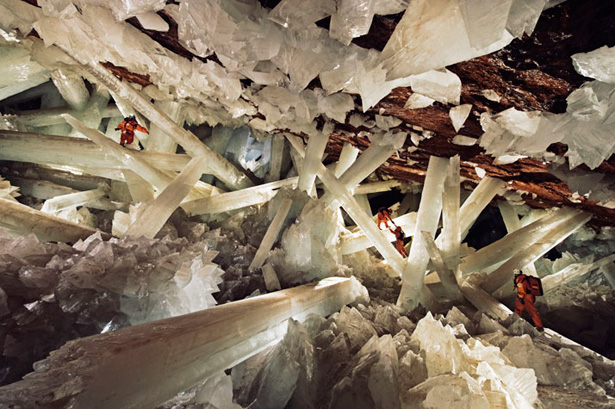Michele Berger
August 16, 2013
Weather.com
Miners digging nearly 1,000 feet into the earth near the Mexican city of Chihuahua got much more than they bargained for.
In a routine drain of the groundwater needed to access the lead, zinc and silver buried deep below, two brothers discovered three caves containing some very old, extremely large crystals. That was in 2000. Until two years ago, scientists used the geological wonder called the Naica Caves of Crystal as a research site, and today, they’re sorting through all they learned from the world’s largest gypsum crystals.
“It is absolutely amazing: You are inside a true ‘woodland’ of giant crystals,” Paolo Forti, who oversaw the international team of scientists, told Weather.com. “I started studying crystals more than 40 years ago and I never supposed, even in my dreams…of staying in such an incredible world.”
A happy accident, for sure, but the story’s not that simple, complicated by how the crystals formed and where they sit.
The crystals grew because “they were submerged in mineral-rich water with a very narrow, stable temperature range — around 136 degrees Fahrenheit,” National Geographic reported. “At this temperature the mineral anhydrite, which was abundant in the water, dissolved into gypsum, a soft mineral that can take the form of the crystals.” It was a crystal-growing method completely new to science, Forti added.
It didn’t happen overnight but during hundreds of thousands of years, creating what the Naica research team describes as “a mineral wonderland, a site of scientific interest and an extraordinary phenomenon.”
It won’t stay that way forever, sadly, namely because of the drained water, according to the Naica website. “The pumping system extracts 22,000 gallons of water per minute. The extraction of groundwater will stop when the mine is no longer productive, flooding tunnels and caves again, allowing the crystals to return to their natural growing conditions.” Forti predicts that will happen within the next five to seven years.

